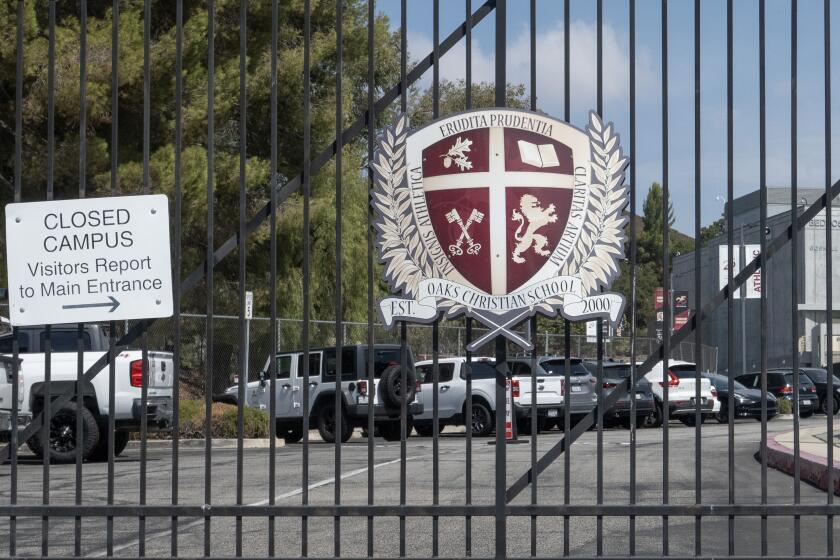Schools Struggle for Quality With Help From Community
Students reentered classrooms across Orange County last week for the start of a school year that will be especially challenging.
Nearly two dozen elementary public school districts have pledged to cut classroom size to 20 pupils. That is a laudable goal; smaller classes allow more individualized attention from teachers, and the extra help usually produces improvements in learning. But for many districts, the slimming down will be difficult to achieve.
Fewer students per classroom meant more classrooms were needed. Gov. Pete Wilson’s initiative to reduce the size of classes from kindergarten through third grade was welcome, but it was worked out with legislative leaders little more than two months before school began. Unfortunately, that left schools with little time to rent portable classrooms--if they could afford them. Some districts will be forced to convert cafeterias or libraries into classrooms or to put up dividers to turn one room into two. That would not be an ideal situation for learning.
There also has been a scramble for teachers. California’s colleges and universities graduate about 5,000 teachers per year; in Orange County alone, an estimated 1,000 new teachers were needed this year.
That led to a wise policy in some districts of hiring instructors with temporary credentials. Administrators will have to see that teachers eventually obtain permanent credentials, but the need now is for instructors in the classroom. There has been an even greater shortage of qualified teachers of bilingual and special education in a number of Orange County cities. Recruitment of teachers with those extra skills should be stepped up.
Class sizes in Orange County have averaged about 30 to 34 students. The payoff to schools that reduce the size is money. The state has pledged $650 per pupil in every lower-grade class with 20 or fewer. The payments are expected to equal about 80% of the cost of creating smaller classes. However, some juggling is required to meet the target.
The Newport-Mesa Unified School District expects to lay off more than 100 teacher aides and office assistants at least temporarily to get money to hire the additional teachers. The aides provide valuable help and their absence will increase the burden on teachers already hard pressed to meet a wide variety of demands.
For one thing, there is an increasing emphasis on computers and instructing students how to use them. That focus exists despite the fact that most districts have far fewer of the machines than needed. It costs a great deal of money for computers and their wiring.
But while computer literacy is emphasized, so is a back-to-basics philosophy in teaching reading. Returning to a focus on phonics requires nifty mental gymnastics from teachers who may be accustomed to other methods of teaching reading.
Schools cannot do the job of education on their own. Parental involvement remains of primary importance. A respect for education at home gives children goals in school. Reading to youngsters, help with homework and regular consultations with teachers and school administrators are needed to reinforce what is taught in class. In many Orange County districts parents have done even more, helping to paint schools and raise money to supplement district budgets. That sort of involvement will always be needed. Besides helping the schools, it shows children the high value their parents put on education.
One topic worth teaching in history classes this year is the 50th anniversary of the end to segregation in Orange County’s classrooms. Reading the comments of those supporting continued segregation of Mexican Americans and whites 50 years ago should remind everyone of how much progress has been made. Comments that reflected the majority thinking five decades ago would not be tolerated today. The lawsuit that led to the integration of the classroom deserves to be better known.
The battle to integrate the county’s schools also lends perspective to today’s struggles to reduce class sizes and improve education in Orange County and across the state. There will always be challenges and the schools will always need help from the community in meeting them.
More to Read
Sign up for Essential California
The most important California stories and recommendations in your inbox every morning.
You may occasionally receive promotional content from the Los Angeles Times.










